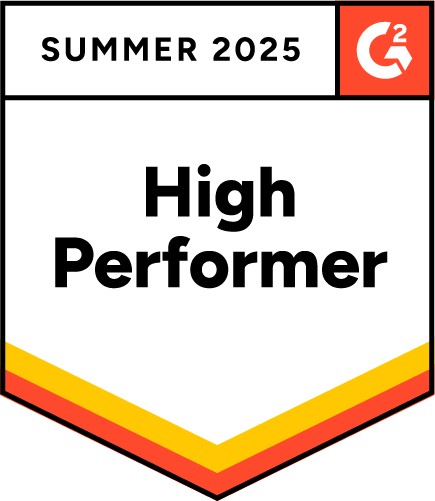The ever-present threat of supply chain disruptions demands proactive risk management strategies. Bindiya Vakil, Founder and CEO of Resilinc, a leading provider of supply chain risk management solutions, sat down with us to share her insights and industry best practices for mitigating risk. Bindiya will dive even deeper into these strategies and more in our upcoming webinar,
"Supply Chain Risk Concentration in 2024."
What was the driving force behind founding Resilinc?
Resilinc was founded in 2010 with the mission to make global supply chains sustainable, secure, transparent, and resilient. Strong supply chains power life itself by allowing the products we rely on every day to reach us. When supply chains falter, the ripple effects can be devastating, impacting our lives, livelihoods, businesses, communities, and economies. Resilient supply chains are not just a luxury, but a necessity in today's interconnected global landscape.
Today, Resilinc’s intelligence and AI powered predictive analytics platform is widely considered the gold standard for supply chain resilience. With millions of suppliers and sites mapped down to the part site level, we expose the most vulnerable geographic hotspots where parts originate, helping customers identify the single points of failure in their complex, multi-tiered supply chains.
Why do you believe supply chain risk concentration is an important topic right now?
Concentration risk happens when a business overly depends on one supplier or region for its business operations. The consequences of that kind of overreliance can be severe especially when a disruption happens: risk to business continuity and bottom-line impact are two examples. Oftentimes, organizations aren’t even aware of the concentrated risks in their supply chains. The only way for companies to reduce this risk is by gaining transparency into their entire sub-tier supply chain via mapping. It’s the foundation to reduce risk concentration and build anti-fragile supply chains.
Knowing your suppliers’ financial health is a key risk area that companies should have insight into. In fact, Resilinc’s data shows that supplier financial stresses are on the rise. According to EventWatchAI (our disruption-sensing monitoring platform) financial challenges triggered large year-over-year (YOY) increases: in 2023 alerts for bankruptcies were up 194%, profit warnings increased 103%, and corporate restructuring increased by 79%.
Without visibility into concentration risk like suppliers' financial health or sole source dependencies, companies are just flying blind in the face of inevitable disruption with major risk to company growth and bottom lines.
What key challenges do companies face when trying to understand risk concentration?
The biggest challenge to companies is the lack of visibility into their sub-tier supply chain, in fact, 80% of disruptions occur in the lower supply chain tiers. To identify risk concentration, you must first know who is in your supply chain. Once organizations map their entire supplier network and gain that visibility, then they can identify risk areas like sole source dependencies.
But it doesn’t stop there. Once possible risk areas are identified, companies should put plans in place to mitigate the risk including diversifying their suppliers or working with a supplier to become more resilient.
Resilinc enables such collaboration between customers and their suppliers when it comes to mitigating supply chain disruptions, fast.
One way – in particular – is via supplier risk assessments. Here’s how it works: once a customer’s supplier network is mapped on Resilinc’s platform, risk surveys are launched to individual suppliers; supply chain weaknesses are flagged; strategies and playbooks to reduce risks are offered; and collaboration to actively mitigate risk is facilitated.
While sometimes identified risks are too extreme or costly to mitigate (leaving a customer to seek a new supplier option); in most cases, the best option is to collaborate with suppliers to reduce unacceptable risks.
For example, we’ve seen a customer pay a supplier to install sprinklers at a factory for fire suppression and another fund a retrofit for hurricane preparedness. Some customers have even created standards for suppliers in hurricane zones and agreed to pay more for their raw materials if those suppliers invest in resilience.
Who would benefit from joining the webinar?
Supply chain and procurement leaders who want accurate data insights into supply chain risk concentrations and actionable advice on what to do about it should join!
In addition to analyzing broader trends impacting global supply chains, we’ll also take a closer look at the data and risks specifically impacting automotive, technology, aerospace & defense, pharmaceutical and healthcare, and financial services supply chains.
It’s sure to be an insightful discussion between James, Tom, and myself. I hope you can join!
About Bindiya Vakil
Bindiya Vakil is CEO and founder of Resilinc. She is a renowned thought leader in supply chain risk management who founded Resilinc to help transform the way that global organizations approach supply chain visibility and risk; driving them to shift from reactively addressing catastrophic supply chain events to putting preventative solutions in place through monitoring, mapping, and planning. She is a founding member of the Global Supply Chain Resiliency Council and sits on the Advisory Board of the MIT Center for Transportation and Logistics.
For more insights like these, be sure to register for our upcoming webinar, "Supply Chain Risk Concentration in 2024." Bindiya — alongside RapidRatings Executive Chair James Gellert and Institute of Supply Management (ISM) CEO Tom Derry — will be diving deeper into these topics and sharing his expertise on how to build a more resilient supply chain. Don't miss out – register today.








